Note: Nione Carlson is one of the amazing Houston Women Artists who will be featured in the forthcoming study Making the Unknown Known: Texas Women Artists, 1860s-1960s (Texas A&M University Press, for CASETA: Center for the Advancement and Study of Early Texas Art, May 2024). Available now for pre-order.

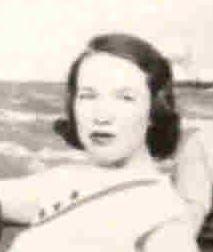
Nione Carlson (1910-1999) was born in Jefferson, Texas, to a family prominent in the town. Her family home, the Alley-Carlson House, is on the National Register of Historic Places. She received early art training from Olin Travis at the Dallas Art Institute.[i] Some sources suggest that she also studied in Chicago, perhaps at the School of the Art Institute.[ii]
By the mid-1930s she had moved to Houston, where she worked for a time at the Hall-Gentry Studio of photography.[iii] In Houston she became part of the avant-garde Cherry-McNeill Group, showing with them at the opening exhibition of Our Little Gallery in 1938.[iv]
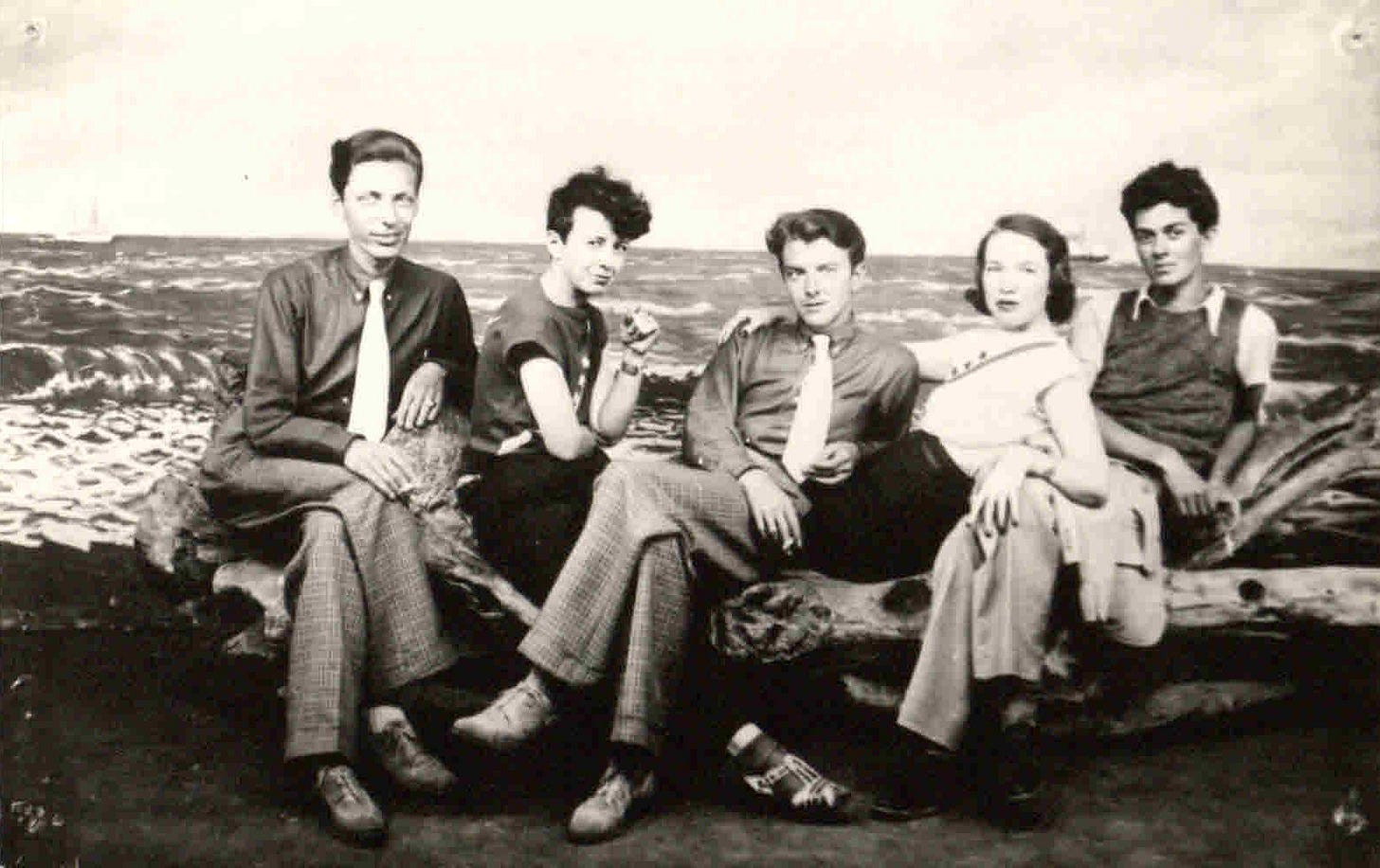
By the late 1930s, Carlson began designing sets and costumes for Margo Jones and her Community Players theater group.[v] Carlson continued to design for various Houston theaters well into the 1950s, and worked with Jones protégée, Joanna Albus, on a projected New York revival of A Streetcar Named Desire, by Tennessee Williams, targeted for 1955.[vi]
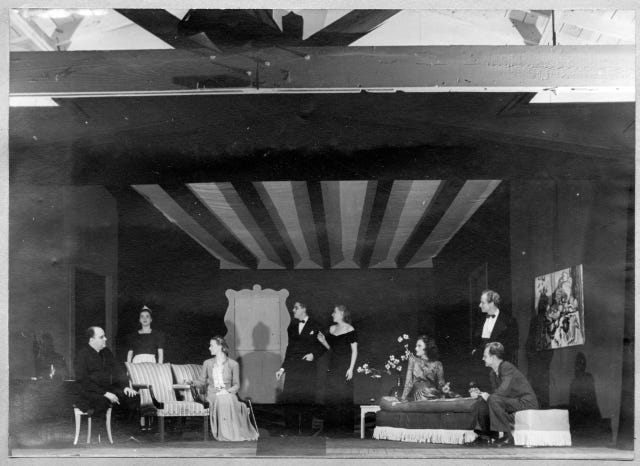
In 1940, Carlson joined the faculty of Feather and Feather School of Fine and Applied Arts, in Houston, to teach commercial art.[vii] Through the 1940s and 1950s, she developed a career as a mural painter, often for theaters and other public spaces, though none of her murals are known to survive.
Throughout the period Carlson continued to make and exhibit easel paintings. As noted, she exhibited at McNeill Davidson’s Our Little Gallery in 1938. She also began showing occasionally in the Houston Annual Exhibitions in 1939, winning the Hughes Tool Company Prize for her Inexorable Source, an oil, in 1949; and had one-woman exhibitions at The Museum of Fine Arts, Houston, in 1947; Brown Book Shop, Houston, 1948; Theater ’48, Dallas, 1948; and Argent Gallery, New York City, 1952. Throughout the period, Carlson traveled frequently around the United States, to Mexico and to Europe, often with her companion, Dr. Mali Jean Rauch-Barraco (1904-1988), a Houston dentist who was a long-time supporter of Houston’s avant-garde art and theater scene.
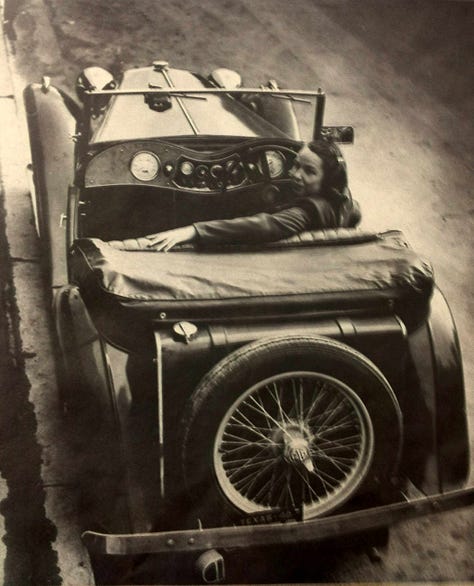

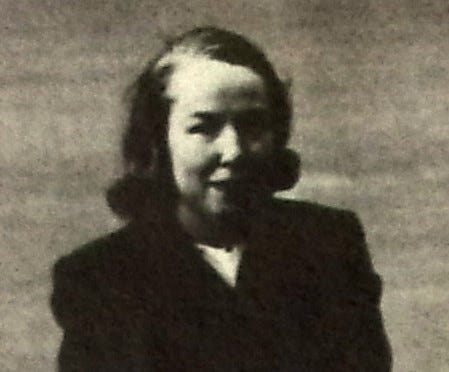
There are reports that Carlson had success with “conventional flower” paintings, though none survive.[viii] Her paintings that do survive are anything but conventional. In the late 1930s she specialized in portraiture, characterized in a 1939 profile of her as “an impressionistic form that projects abstract qualities,” a “psychological type of work that sometimes emphasizes characteristics people would prefer to keep hidden.”[ix]
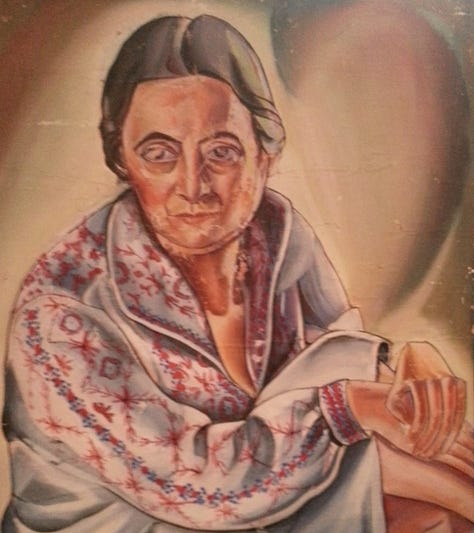

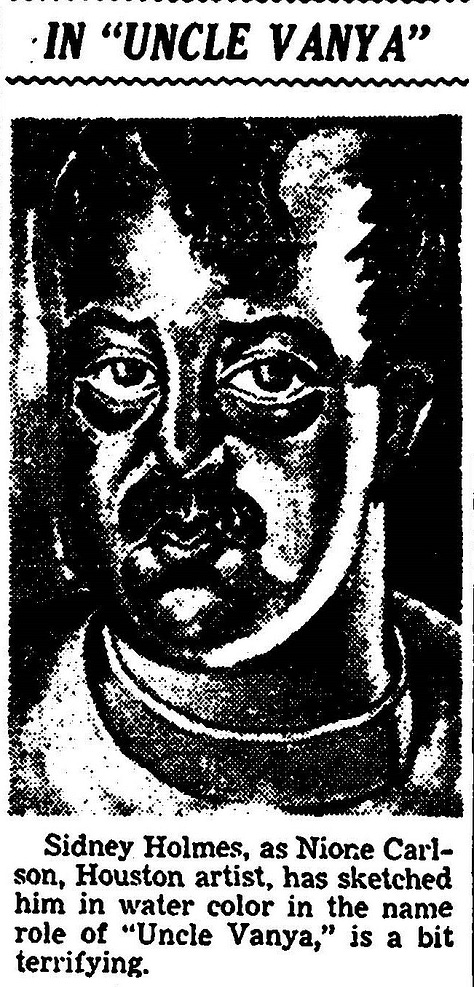
At about the same time, she made a group of landscapes expressing a distinctive take on regionalism, a mode not widely adopted by artists in Houston – but Carlson’s regionalism seems to have settled back to earth after a Futurist tornado.
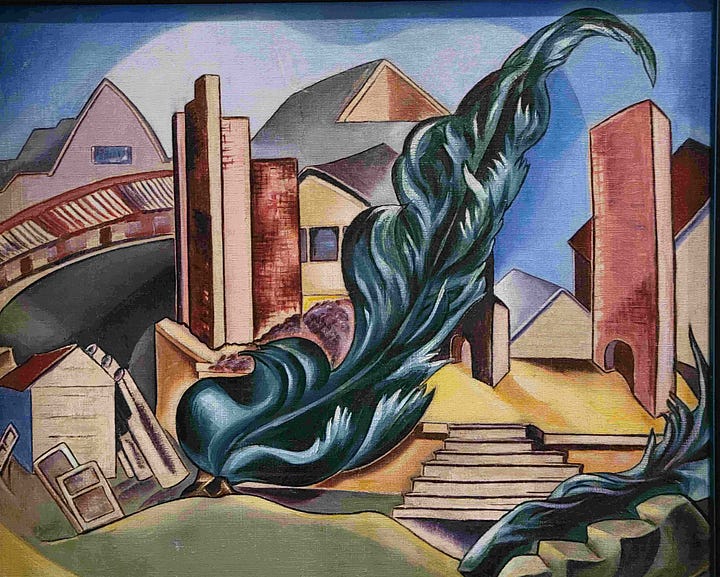
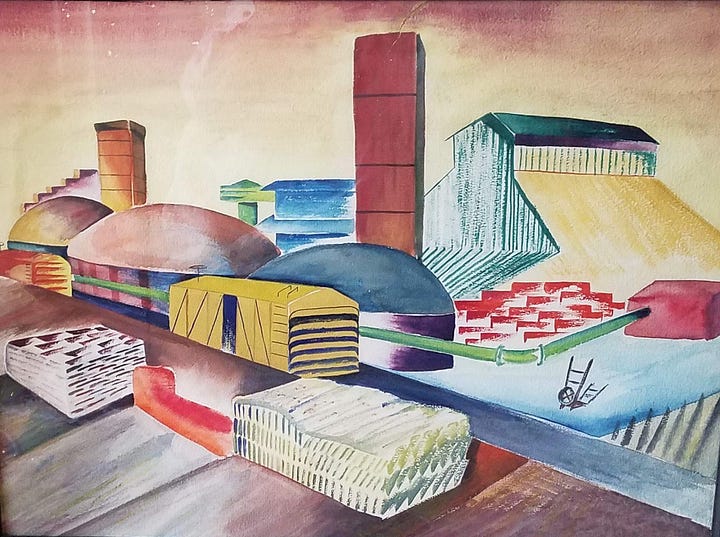
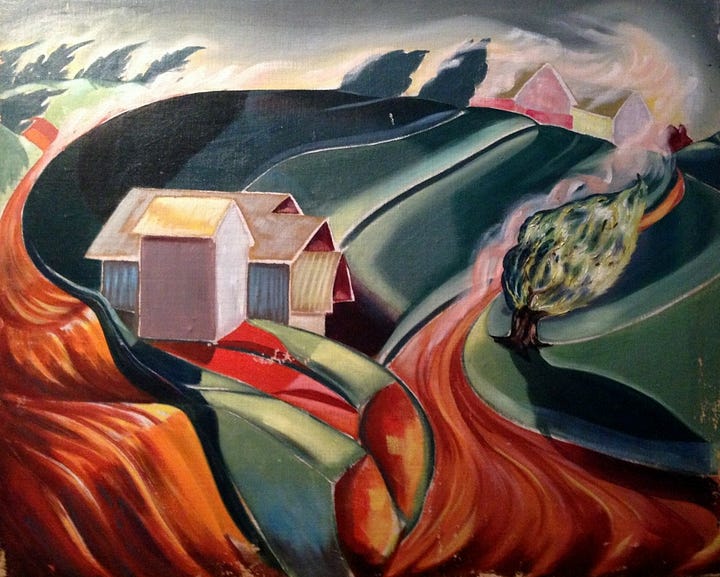
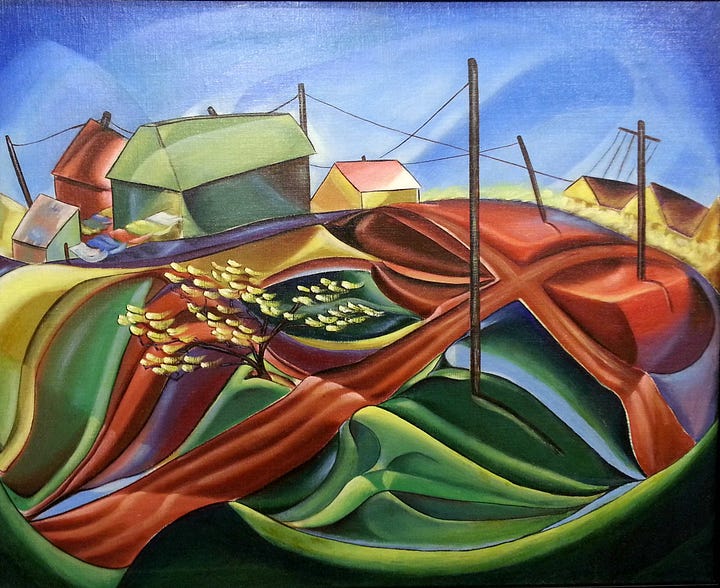
By the time of her one-artist shows, in the late 1940s/early 1950s, that tornado had blown away both portraiture and landscape, and she was making her paintings completely non-objective. A review of her 1948 Houston show noted that the paintings “cannot be analyzed rationally.”[x]


In 1952, Art News observed that her paintings seemed “directly ejected from the congested depths of Miss Carlson’s psyche,” but that she possessed an “already-evident technical skill.”[xi] Whatever else they might have to say about her work, no one seemed to dispute that, as the Houston reviewer noted, “Miss Carlson has evolved a highly personal style.”
[i] Patye Billfaldt, “Nione Carlson’s Art Polyphonal,” Houston Post, Sunday, February 8, 1948, 6 iv.
[ii] Obituary, Houston Chronicle, February 28, 1999, 43.
[iii] Morrison & Fourmy’s Houston (Texas) City Directory, 1935, xl, 370.
[iv] Exhibition flyer for Our Little Gallery opening, 1938, photocopy in the possession of the author.
[v] Margo Jones, who became prominent as a regional theater innovator in Dallas in the 1940s, also worked as a producer and director in New York City until her death in 1955, started the Community Players in Houston 1936, calling on several members of the Cherry-McNeill Group to design her productions. For more on this, see Left Bank on the Bayou: Houston Avant-garde Art and Theatre in the 1930s, the catalog of an exhibitions held at the O’Kane Gallery, University of Houston, Downtown, September 4 – October 16, 2014.
[vi] Ed Lacy, “Between the Lines,” Houston Chronicle, Sunday, March 13, 1955, 54.
[vii] “Feather School Will Open With Expanded Staff,” Houston Chronicle, August 25, 1940, 48.
[viii] Cora Bryan McRae, “30 Picture Sales Made By Artists,” Houston Chronicle, November 30, 1938, 40.
[ix] “Hoping to Revive Interest in Illuminated Manuscripts, Houston Artist Heads East,” Houston Press, Sept 1, 1939.
[x] Billfaldt, “Nione Carlson’s Art Polyphonal.”
[xi] E.C.M., “Nione Carlson [Argent],” Art News, December 1952, 51 55.


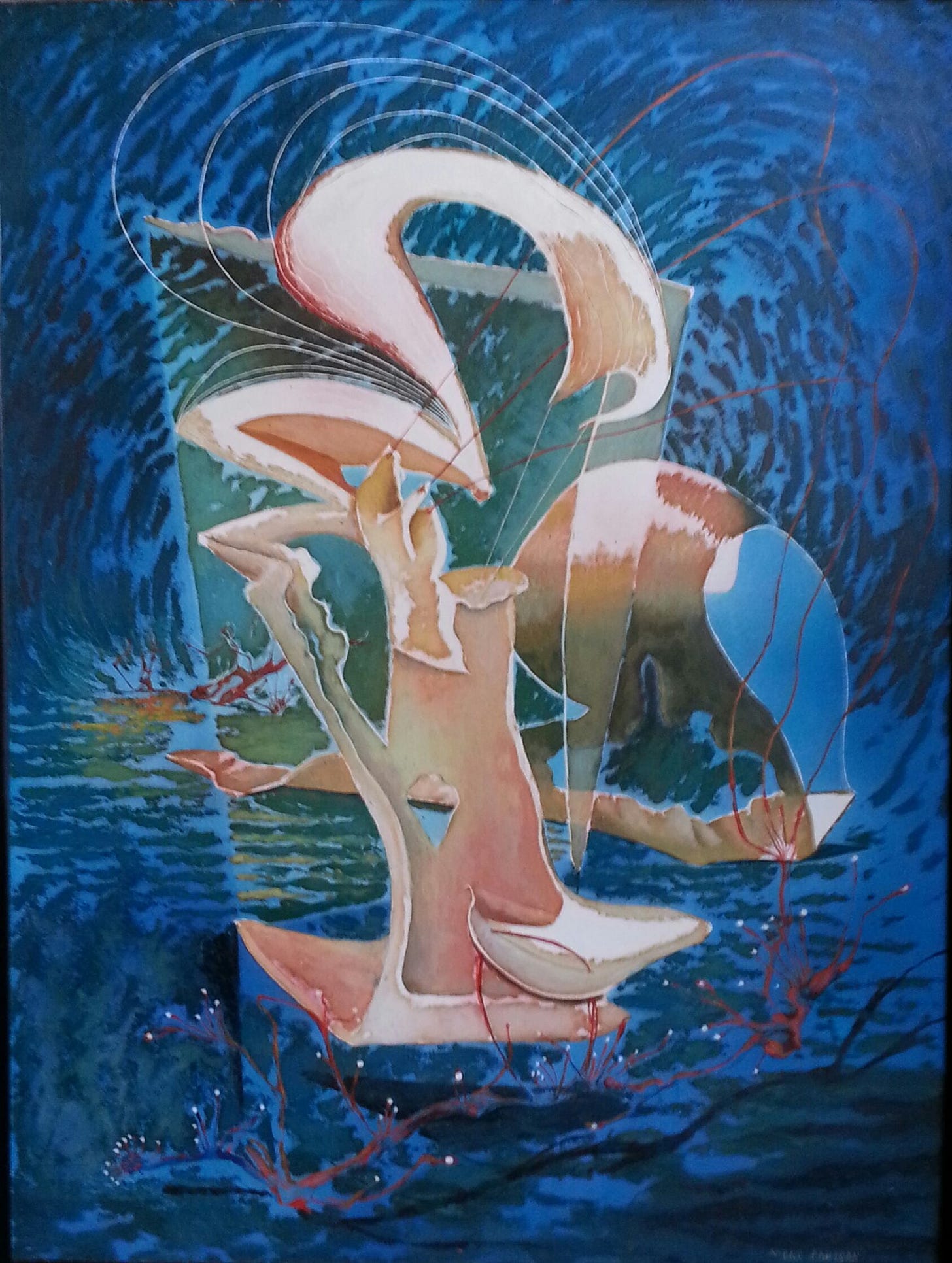
You quoted my grandmother Cora Bryan McRae. I just happened to be Googling her and found your article. Yours is very interesting. Thank you for resurrecting my grandmother's.
I love the early Houston art history. I'd love to see our museums showing more of these artists.